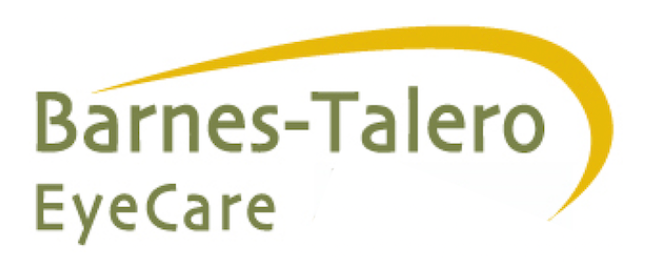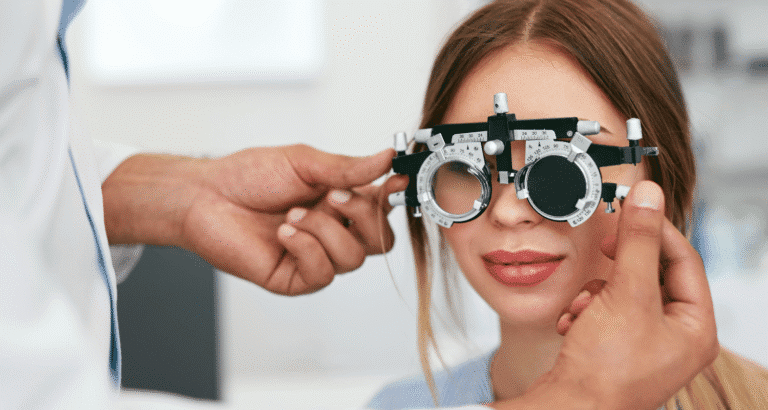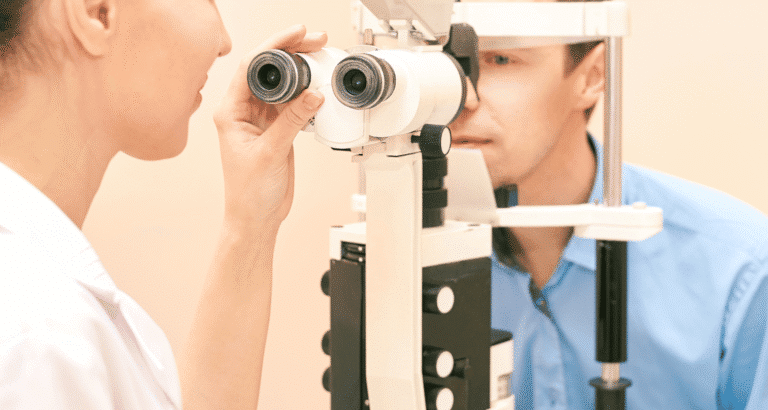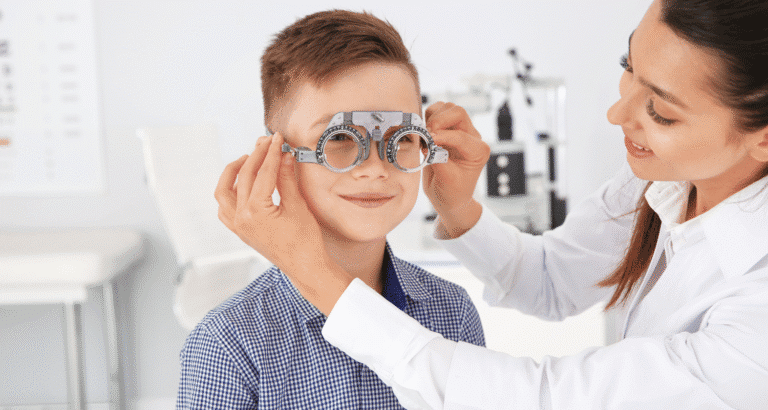Nearsightedness, or myopia, is one of the most prevalent vision disorders in the world and affects people both young and old. Make sure your kid’s eyes are tested regularly as recommended. If their vision is poor, determine the best way to correct nearsightedness and explore their options for clear, comfortable vision. Many people ask, “How do you correct nearsightedness, and what options are available for clear, comfortable vision.
We at Barnes Talero Eyecare want to empower patients by informing them of the causes, symptoms, and treatments of myopia so that you can have your healthiest vision and life possible.
What Is Nearsightedness?
Myopia, commonly referred to as nearsightedness, is a type of refractive error in which objects at close range are seen clearly, but distant objects appear blurry. This occurs when the eyeball is too long or the cornea has excessive curvature, causing light to focus in front of the retina rather than directly on it. It is the opposite of farsightedness, in which distant objects are easily seen while close ones seem blurry. It is essential to understand the distinction between nearsighted and farsighted conditions when seeking an appropriate treatment and corrective lenses.
Nearsightedness Symptoms
Identifying signs of myopia early helps avoid eye strain, headaches, and problems carrying out daily activities. Typical symptoms include difficulty focusing on distant objects, frequent squinting, and a need to sit closer to screens or boards to see clearly. This is why early detection of the problem is essential in both children and adults.
- Trouble seeing things that are far away, like road signs or the chalkboard in class
- Squinting to improve focus
- Headaches all the time from eye strain
- Needing to sit close to screens or TV for clarity
Children who haven’t been diagnosed with myopia can also experience difficulty at school because they are unable to see distant objects clearly. Eye check-ups are recommended for early detection and treatment of eye conditions.
What Causes Nearsightedness?
Many parents and adults ask, “What causes nearsightedness?” There are several causes of myopia, including genetic factors and environmental influences. Kids who have myopic parents are at a higher risk of developing myopia as well. Additionally, lifestyle factors such as prolonged near work, reading, or excessive screen time may also be risk factors.
Causes of Myopia Class 10
For students learning about vision in school, the causes of myopia in Class 10 include:
- The eyeball is slightly longer than normal
- Excessive curvature of the cornea
- Genetic predisposition
- Extended close-up work without breaks
Knowing these factors aids in the execution of preventive actions, such as engaging in outdoor activities and maintaining good eye care habits.
What Is the Highest Myopia?
What is the highest myopia? It is an extreme form of myopia, often expressed in diopters. High myopia is usually more than -6.00 diopters, and people who have severe myopia are at greater risk for such conditions as retinal detachment, glaucoma, and cataracts. Regular monitoring by an eye care professional is critical for individuals with high myopia to maintain eye health.
Diagnosis and Tests for Nearsightedness
It is essential to test correctly in order to diagnose nearsightedness and determine the most suitable treatment accurately. During eye exams at Barnes Talero Eyecare, depending on your age and specific testing recommendations, you may receive some different tests to evaluate your eyes; these tests are designed to measure visual acuity (clarity), the way light focuses on the retina, depth perception, how well your pupils respond in bright light or darkness in addition to other screenings for health conditions. These comprehensive evaluations result in customized therapy, including corrective, contacts lenses, or other treatments.
- Visual acuity testing to measure clarity of distance vision
- Refraction assessment to determine the prescription needed for corrective lenses
- Eye health evaluation to rule out other conditions, such as astigmatism or glaucoma
Testing early is crucial in children, with myopia progressing severely during growth years.

Treatment Options for Nearsightedness
The treatment for nearsightedness will depend on the severity of the cases and the lifestyle requirements of each patient. Options include nearsighted glasses and contacts for everyday correction, or surgery such as LASIK or PRK for more permanent results, allowing people of any age to free themselves from the restrictions of glasses and contact lenses.
Nearsightedness Glasses
Glasses are the most widely available and least invasive correction. The lenses are concave, allowing light to be focused directly on the retina. They come in all kinds of styles and strengths to accommodate how myopic you are, as well as your personal taste.
Contact Lenses
Plano contact lenses give a wider field of vision and are suitable for use in sports or other activities. They are similar to glasses in that they bend light, allowing it to focus correctly on the retina when it enters the eye.
Refractive Surgery
When vision correction is a more permanent solution that you seek, refractive surgery (like LASIK or PRK) reshapes your cornea for corrected focus. These two methods are highly effective for mild to moderate myopia and can result in either significantly reduced or no dependence on glasses or contact lenses.
Orthokeratology
For most people, daytime contact lenses are prescribed. Specialized contact lenses worn only at night temporarily reshape the cornea, allowing you to wake up with sharp vision during the day without needing to wear glasses or contacts. This non-invasive alternative is particularly popular among children with advancing myopia.
Lifestyle and Preventive Measures
Any intervention to reduce near work, take breaks from screens, and spend time outdoors would help slow the progression of myopia in both children and adults.
Nearsighted vs Farsighted: Understanding the Difference
It is necessary to differentiate between nearsighted and farsighted. Nearsighted individuals can see close objects clearly but have difficulty seeing distant objects, and those who are farsighted experience the opposite. When you are correctly diagnosed, the appropriate prescription and course of action, whether glasses for nearsightedness, contact lenses, or even surgery, is put forth.
Causes of Nearsightedness
The primary reasons are genetic predisposition, excessive close-up work, and environmental factors, such as insufficient time spent outdoors. Children are particularly susceptible to the progression of myopia during their school years, making it essential for them to undergo routine eye exams. Good nutrition, regular eye exercises, and limiting screen time can also help reduce the risk.
How to Correct Nearsightedness
So, how do you fix nearsightedness? The primary methods include wearing nearsightedness glasses or contact lenses to refocus light onto your retina, undergoing refractive surgery like LASIK for long-term correction, or using orthokeratology lenses that temporarily reshape your corneas overnight for clear vision during the day. Selecting the correct option will typically be based on age, work-life conditions, and the severity of the corneal condition..
- Glasses: Simple, effective, and adjustable for all ages.
- Contact Lenses: Offer freedom and enhanced vision coverage.
- Surgical Options: LASIK, PRK, or advanced laser techniques for long-term correction.
- Orthokeratology: Non-surgical, reshaping the cornea overnight for clear daytime vision.
Choosing the best option depends on an individual’s age, lifestyle, degree of myopia, and preference.. An optometrist can suggest the best choice.
Living With Nearsightedness
With good care and pain control, people with myopia can also engage in all activities. Wearing your nearsightedness glasses or contact lenses, seeing the eye doctor for periodic exams, and reporting vision changes are all necessary in preserving the health of a child’s eyes. Plan regular outdoor activities, have children take breaks from near work, and spend more time outdoors to prevent rapid myopia progression.
Conclusion
Nearsightedness correction. It is essential to understand the causes, symptoms, and treatment options for nearsightedness. Whether you choose nearsightedness glasses, contact lenses, or surgery for your treatment, early detection and routine eye exams are the best ways to maintain clear vision.
At Barnes Talero Eyecare, we offer a comprehensive range of eye examinations, individualized treatment plans, and instruction in controlling myopia. Whether it’s talking about what causes nearsightedness or offering the best correction options, we’re committed to helping every patient see (and live) better at any age.
FAQs
How to cure myopia naturally and effectively
Although you can’t entirely reverse myopia naturally, outdoor time, screen breaks, and good eye habits may help slow the progression of the condition.
How to cure short-sightedness permanently?
Long-term correction of nearsightedness typically requires refractive surgery, such as LASIK or PRK, which alters the cornea’s shape to minimize or eliminate the need for corrective lenses, including glasses and contact lenses.
How to fix nearsightedness without glasses?
Options to correct nearsightedness without glasses include contact lenses, orthokeratology (also known as nighttime reshaping lenses), or refractive surgery for lasting vision correction.





